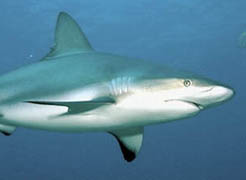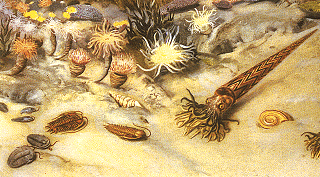

Extinctions
In the late Cambrian, a series of extinction wiped out most of less specialized families along agnostids, redlichiids and corynexochids and phtychopariids.
The survival groups are burrowing asaphid, enrolled calymenida and spiny ceraurid. Burrowing, enrolment and spines are considered as effective measures against predation. At late Ordovician, another episode of extinction happened. The number of the families reduced to few than 10, Groups like trinuclieds and asaphids, the remaining corynexochoids, ptychopariids and agnostids were wiped out. Trilobites were rare in Silurian. Phacopids were the most common one. In Devonian, Phacops and Greenops were the most common ones. All trilobites disappeared at the Permian extinction episode.
 |
 |
The more effective predators such as straight shell nautilus and sharks was possibly the cause of the extinction. Climate and sea level changes might be responsible. The real cause for the extinctions is still being debated.